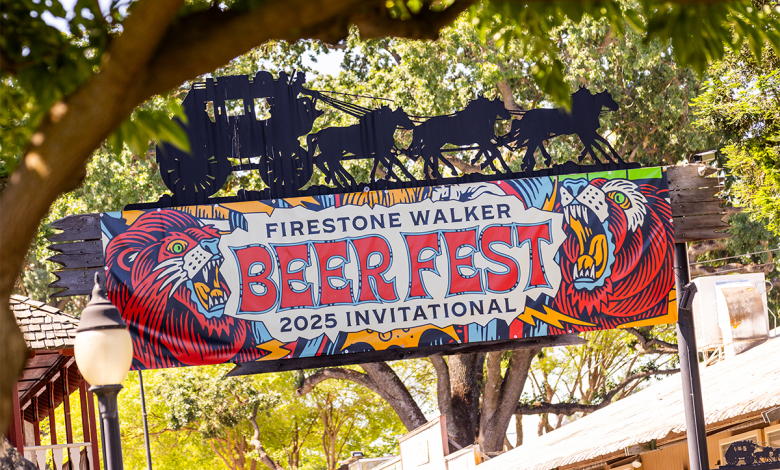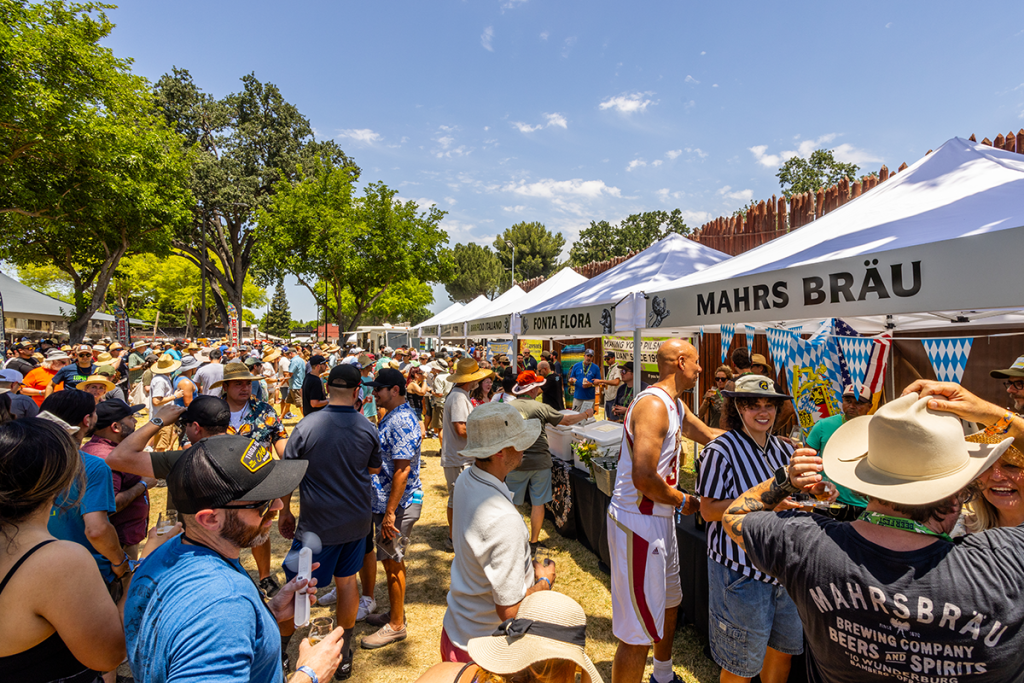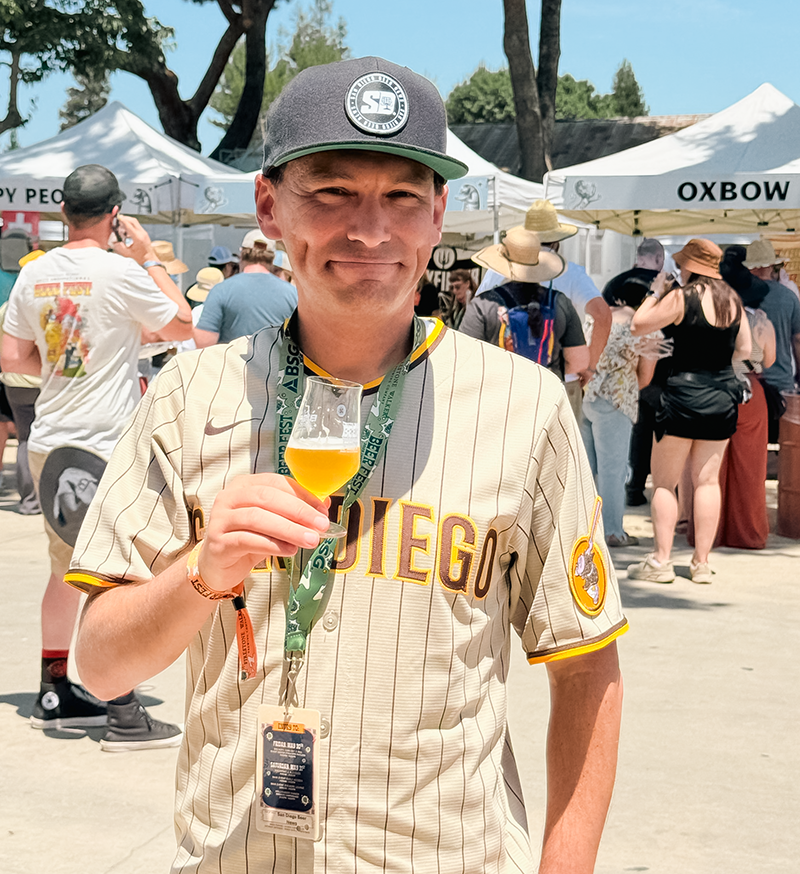

There are beer fests and then there are beer fests. The italicized variety are exceptional gatherings where ale-and-lager enthusiasts can find beers they can’t get at a standard festivals. They’re worth jockeying online for much-in-demand tickets and traveling hundreds of miles to attend. In short, they’re the real deal, and tops among this elite sect is the Firestone Walker Invitational Beer Festival (FWIBF).
Held each year at the Paso Robles Event Center, this fermented fete draws top-tier breweries from around the world, many of which have very limited distribution, making this a rare opportunity to sample their wares. How does a brewery in a small, agriculturally driven city in the middle of California attract such talent? It’s all about connections, specifically those of Firestone Walker Brewmaster Matt Brynildson, a serial collaborator who personally invites up to 70 of his personal friends and colleagues to participate. Not only do they take part, but those brewing professionals show up in-person to pour beer and interact with eventgoers.
With a rotating roster of participating breweries, each year’s fest provides a once-in-a-lifetime opportunity to try beers attendees would otherwise only dream of getting their hands on as well as a number of specialty creations crafted especially for the occasion, most of which will never be poured again.

Having a surreal lineup of hundreds of beers laid about before you is not only awesome…it’s daunting. There’s far more liquid goodness than any human could come anywhere close to consuming. Throw in the fact such a large percentage of the beers are barrel-aged or otherwise imperial (i.e., high in alcohol) plus the fact temperatures typically soar during the event’s late-spring timeframe, and the need to be both organized and strategic is real. Fortunately, FWIBF has its own app, allowing attendees to see the breweries and beers that will be at the event and develop a plan of attack.
As one would expect, there are tons of IPAs available. Ditto the aforementioned oak-aged behemoths. And thanks to the rise in popularity of low-to-mid-ABV lagers, there are plenty of them to help offset the burlier beers. And sprinkled amid those offerings are lesser-seen, less expected styles. So, regardless of one’s personal preferences, festgoers stand a great chance of finding what they like, even an English-style if it’s traditional English-style ESB (extra special bitter), Belgian-style abbey ale or a Polish-style Grodziskie. Yes, a Grodziskie!
It’s great to be able to bliss out on hoppy, crispy and spirit-barrel-matured beers, but for me the best part of FWIBF is being able to set my sights on types of beers I rarely see in the current stylistically contracted market and spend all day drinking those. This year, I focused on saisons (my all-time favorite style), followed by spontaneous, mixed-fermentation and barrel-aged sour beers. I didn’t limit myself exclusively to those beer styles, of course, but it made for a day unlike any I have experienced elsewhere, which was the point.
The following are the best beers I sampled by stylistic category. For those under the impression its all hops, oak and crushers, this should give you a good idea of just how FWIBF has to offer in the way of variety and even esotericism.

Saisons / Farmhouse Ales
- Oxbow Brewing (Newcastle, Maine) | Petite FPA: These saison specialists always kill it, and somehow they packed the most flavor into their smallest (4.5% alcohol-by-volume) offering.
- There Does Not Exist (San Luis Obispo, California) | South of Nelson: Brimming over with Nelson’s Sauvin’s trademark white-wine essence (minus the petrol), this beer was incredible.
- Monkish Brewing (Torrance, California) | See or Seem: I’ve missed the Belgian ales that were once this business’ raison d’être, and this mixed-culture standout took me back to the good old days.
- Oxbow Brewing (Newcastle, Maine) | Pastoral: Were I to have tasted this blindfolded, its grassy notes, sturdy head and dry finish would have led me to believe it was brewed in Wallonia.
- Revolution Brewing (Chicago, Illinois) | Saison d’Armond Blanc: Chardonnay lees from Paso Robles’ Herman Story and Ultima Tulie wineries brought in nice oaky, musty terroir.
- Monkish Brewing (Torrance, California) | Sans Fuzz: This barrel-aged farmhouse ale was infused with nectarines, giving it plenty of fleshy, juicy stone-fruit appeal.
Spontaneous, Wild & Mixed-Culture Beers
- Bofkont Beer (Kontich, Belgium) | Moonwalk 2024: This Belgian powerhouse’s apricot lambic narrowly beat out the exotic bourbon- and maple-syrup-barrel-aged gueuze it shared menu space with.
- Beachwood Brewing (Huntington Beach, California) | Funk Yeah: They’re known for IPAs, but this SoCal op’s blendery puts out some of the best spontaneous beers around, including this gueuze.
- Russian River Brewing (Windsor, California) | Small Batch Intinction Sauvignon Blanc Dry-hopped with Nelson Sauvin: What happens when a suds stalwart dry-hops one of its wine-tinged barrel-aged sours with New Zealand hops? In this case, style-elevating magic.
- Schilling Beer Co. (Littleton, New Hampshire) | Blend No. 1: Microflora from the Ammonoosuc River imparted notes of lemon and pear, plus barnyard funkiness to this soft-textured gueuze.
- Green Bench Brewing (St. Petersburg, Florida) | Searching For Tomorrow: Dark mixed-fermentation beers are extremely rare, and the bready, funky character of this gem will make one wonder why.
- Allagash Brewing (Portland, Maine) | Humbleberry Tumble: What I’m guessing is an absurd amount of Maine-grown honeyberries and cherries render this sour golden ale a flat-out fruit-bomb.
Other Styles
- Wildflower Brewing & Blending (Sydney, Australia) | Organic Table Beer: With big floral, herbaceous notes, this was easily the most vivid and flavorful sub-3% beer I’ve ever had.
- The Alchemist (Stowe, Vermont) | Dark: I’d trade a case each of Heady Topper and Focal Banger for regular access to this silky smooth, roasty yet refreshing black lager.
- Firestone Walker Brewing (Paso Robles, California) | Fourth Meal at Graceland: Banana in beer can be iffy, but marshmallow and peanut butter made for a well-rounded dessert stout.
- Cellarmaker Brewing (Berkeley, California) | Triple Barrel Batch 2000: Brimming with notes of vanilla, caramel and straight-up booze from a trio of whiskey barrels, this was special.
- Horus Aged Ales (Oceanside, California) | FWIBF Crown: One of several “Fest Features”, this locally crafted quadruple barrel-aged coconut stout was as burly (18.7%) as it was delish.
- Birrificio Italiano (Limido Comasco, Italy) | Polock Sour: It took an adventurous Italian op to do it, but I got my Grodziskie. This one was barrel-aged, mild and abundantly food-friendly.

